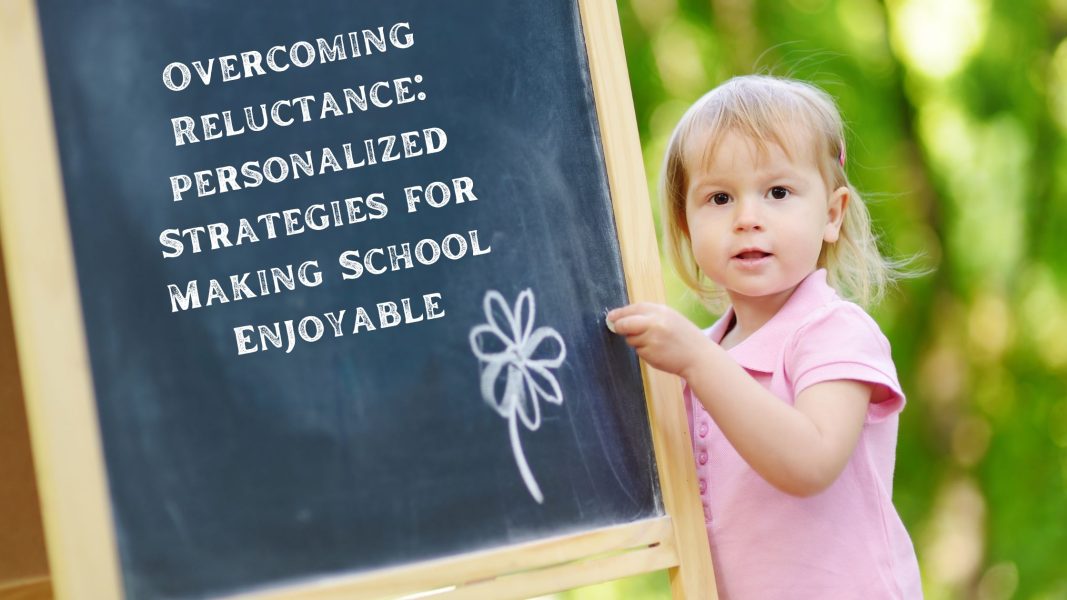Is your child expressing reluctance or resistance when it comes to going to school? As a fellow parent, I understand the challenges that come with this situation. In this blog, I’ll share some real-life examples and personalized advice to help you navigate this common parenting struggle and make going to school a positive and enjoyable experience for your child.
Nurturing Enthusiasm: Strategies for Helping Your Child Love School
When my little one, Hitarth, started his journey in school, like many parents, I had concerns about how he would adapt to this new environment. I wanted him to enjoy school, make friends, and look forward to each day with excitement. Through trial and error, I discovered a few strategies that helped him overcome his initial reluctance and embrace the school experience wholeheartedly. Today, I am thrilled to share these strategies with you, as they transformed Hitarth’s perspective on school and turned it into a place he loves.
Now, even on holidays, there are days when he eagerly says, “I like school and I want to go!” The joy and enthusiasm he expresses for school is a testament to the success of these strategies. So, let’s dive in and explore how we can help our children find joy and enthusiasm in their school journey.
Start the Conversation Early
One powerful strategy that worked wonders for my son, Hitarth, was keeping the conversation about school and the school environment alive even before he started his first day. Around 10 days before school started, I began discussing all the exciting aspects of school with him. We talked about the playground, the fun activities he would get to participate in, and the interesting subjects he would learn. By creating a positive narrative around school, I noticed his excitement building up day by day.
During these conversations, I made sure to focus on the positive aspects of school, highlighting the friendships he would make and the new experiences he would have. We looked at pictures of school on the internet together, and I shared stories of my own school days, emphasizing how much fun I had and the valuable lessons I learned. By painting a vivid and enthusiastic picture of school, Hitarth’s anticipation grew, and he couldn’t wait to embark on this new journey.
As the days drew closer to his first day of school, we continued our discussions and even started preparing some school supplies together. This gave him a sense of involvement and made him feel like an active participant in the process. By the time the big day arrived, Hitarth was already filled with excitement and positivity, which significantly contributed to his smooth transition. In just two days, he settled in comfortably, and the foundation of his love for school was laid.
By starting the conversation early and consistently talking about school and the positive aspects of the environment, you can help your child build anticipation and excitement for this new chapter in their lives. Sharing stories, looking at pictures, and involving them in the preparation process can create a sense of ownership and make them feel more prepared and eager for their first day. This proactive approach can set the stage for a successful and enjoyable school experience.
📣 Loved what you read? Want to go deeper into conscious parenting? ✨ The Power of Manifestation in Parenting is now available — A soulful guide packed with real-life tools like affirmations, energy shifts, and sleep talk that I personally use with my son, Hitarth. 💛 Start your journey toward calmer, connected parenting today. 🎉 Launch Offer: Only ₹99 (limited-time price!) 📲 Instant download. No waiting. 👉 Grab your copy now!.
Keep the Conversation Alive
Imagine sitting down with your child during dinner and asking, “Guess what happened at school today?” By showing genuine interest and excitement in their day, you create an open space for them to share their experiences. As they talk about their teachers, friends, or funny moments, you’ll notice their enthusiasm growing. Sharing these moments helps your child feel connected and reassured about the school environment.
Let Them Decide Their Lunch and Uniform
Picture yourself involving your child in deciding what they want to pack for lunch. By giving them choices and allowing them to select their favorite foods and snacks, they feel a sense of ownership over their lunchbox. Similarly, allowing them to have a say in choosing their school uniform or backpack empowers them and helps them feel more confident in their school attire.
Spread Kindness and Love
Worked wonder in my case! Imagine your child witnessing a classmate feeling homesick and crying for their parents. Encourage your child to offer a kind word, a comforting hug, or a friendly gesture to console their classmate. Teach them the importance of empathy and compassion, reminding them that a small act of kindness can make a big difference in someone’s day. Let them know that by extending love and support to their peers, they contribute to creating a nurturing and inclusive school environment.
Make School Feel Familiar
Imagine taking a trip to the school with your child before the academic year starts. Walk through the hallways, explore the classrooms, and visit the library together. By familiarizing them with the school environment, you alleviate any fear of the unknown. Point out the exciting things they’ll get to experience, such as the art corner, the science lab, or the playground. This helps them feel more comfortable and excited about their upcoming school journey.
Establish a Morning Routine
Picture yourself establishing a morning routine that includes special rituals or activities your child enjoys. Maybe you create a breakfast routine where you both share a funny story. You can designate a special spot for getting ready, where you help them pick out their clothes and get dressed. Having a predictable and enjoyable routine helps set a positive tone for the day and eases any morning anxiety.
Highlight Teacher’s Love
Imagine sharing with your child how much their teachers care for them. Remind them of the special bond they have with their teachers, who dedicate their time and effort to support their learning and growth. Encourage your child to appreciate their teachers by saying “thank you” or creating a small handmade card to express their gratitude. Knowing that their teachers love and care for them helps build a positive connection between your child and the school community.
Foster Connections
Visualize arranging playdates or encouraging your child to participate in school-related activities outside of regular school hours. By fostering connections and friendships with their classmates, your child will feel a sense of belonging and support. These relationships create a support system within the school community, making the school environment more enjoyable and comforting for your child.
Conclusion
Remember, every child is unique, and finding the right approach to address their reluctance is a process of trial and error. By incorporating real-life examples and personalized strategies, such as engaging conversations, involving them in decision-making, making school familiar, establishing routines, and fostering connections, you can help your child develop a positive outlook on going to school. Embrace empathy, patience, and creativity as you support your child’s journey toward a happier and more engaged school experience.
Your comments and shares do more than just support our blog—they uplift the amazing moms who share their stories here. Please scroll down to the end of the page to leave your thoughts, and use the buttons just below this line to share. Your support makes a big difference!



